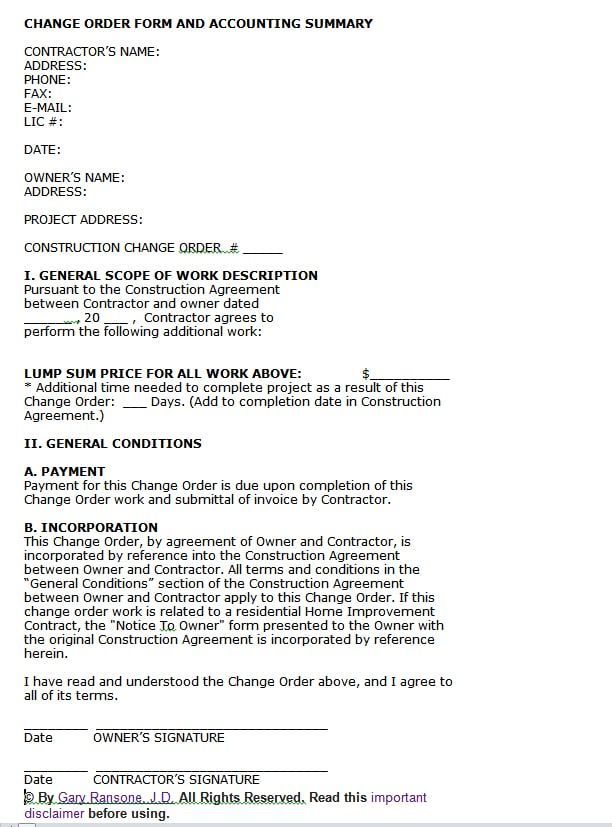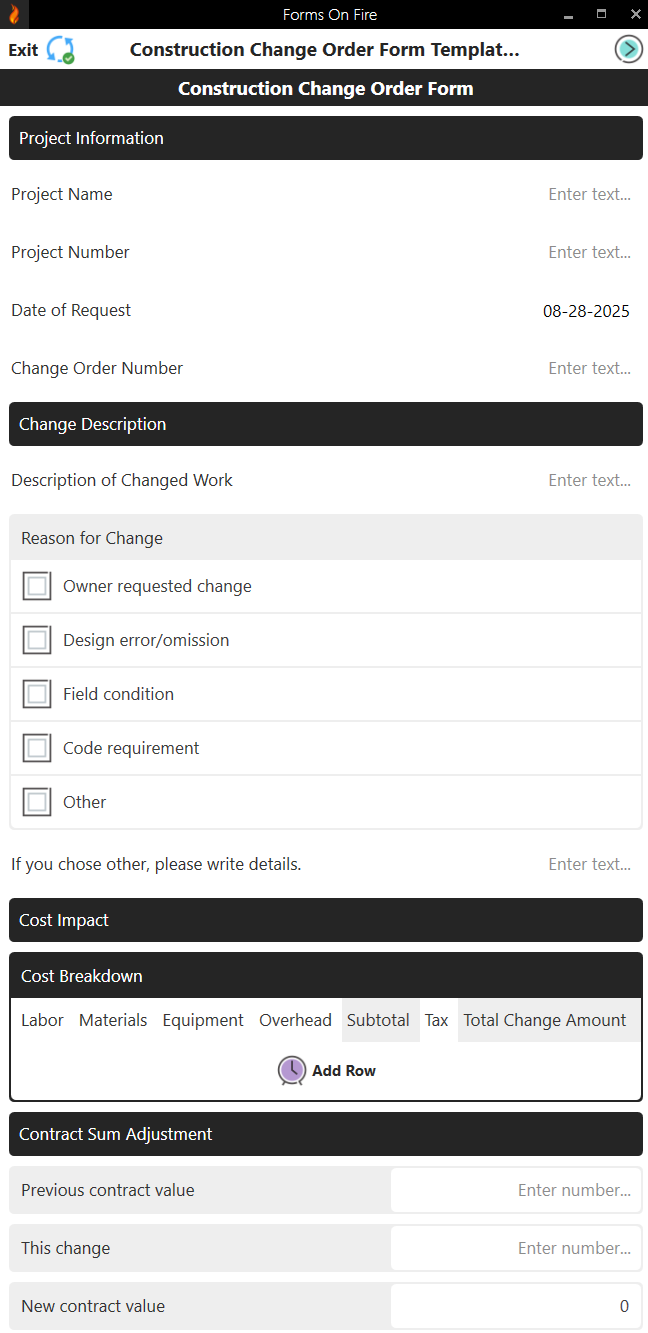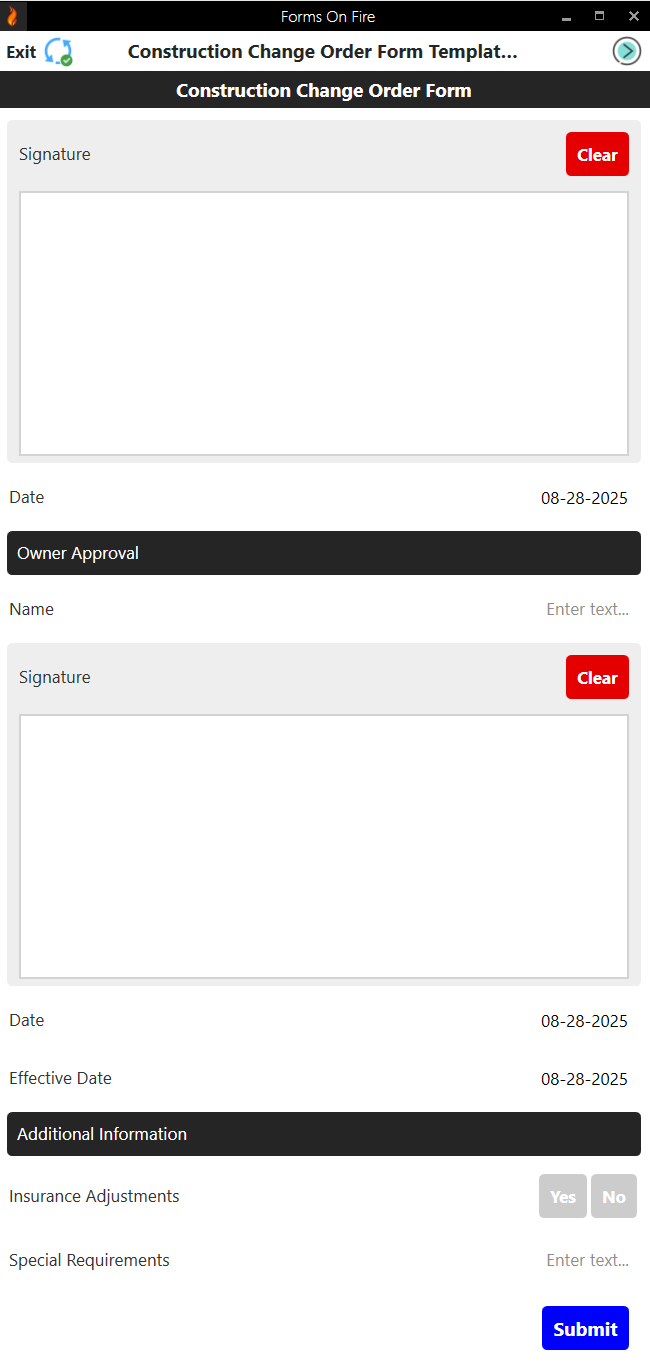Get Your Construction Change Order Form Template
If you've been in construction for more than five minutes, you know projects never go exactly as planned. Whether it's the client suddenly deciding they want marble instead of granite, or you hit a gas line that wasn't on any papers, changes happen.
That is where a digital change order template can be a lifesaver. It helps expedite the process, so the project doesn’t stall because of a few signatures that need to be picked up.
Start a free trial of Forms On Fire, grab our digital Construction Change Order Form Template from the database, customize it for your needs, and deploy it to your team in just minutes.
We have hundreds of templates available, so you can also find things like Daily Work Report template, Stop Work Order template, Incident Report Form template, and many more.
If you are more interested in learning how to build your own template, let’s explore how change order forms work and what to include.
What is a change order form?
A change order form is basically your insurance policy in writing. It documents any changes to the original contract: materials, timeline, scope, or price. Think of it as an amendment that gets everyone on the same page before work continues.
What triggers these things? Here are the usual suspects:
- The client changes their mind (shocking, we know).
- Discovery issues: You open up a wall and find out the previous contractor was apparently legally blind. Now you're dealing with code violations nobody knew about.
- Weather delays, especially with concrete pours or roofing. Mother Nature doesn't care about your schedule.
And sometimes, you miss something in the original estimate. It happens.
The approval process is straightforward but ironclad: document the change, spell out cost and timeline impacts, get signatures from all parties, and don't start work until that ink is dry.
This protects everyone. For you, no unexpected costs or scope creep. For the client, no surprise bills. Everyone knows exactly what they're getting and paying for.
What to include in a change order template?
Who's actually using change order templates? Pretty much everyone on the job site: general contractors, subs, project managers, architects, and owners' reps. Basically, anyone who has a say in scope, cost, or timeline decisions needs to be in the loop.
Essential fields every change order should include to be clear, legal, and trackable:
- Project name & number: Ties it to the right job.
- Date of request: When the change order was created.
- Change order number: Unique ID for tracking and reference.
- Description of changed work: Clear explanation of what's being modified, added, or deleted.
- Reason for change: Why this modification is necessary.
- Cost breakdown: Detailed pricing for labor, materials, equipment, and overhead.
- Contract sum adjustment: Net change to original contract value (+ or -).
- Schedule impact: How this affects the project timeline and completion date.
- Requested by: Person or party initiating the change.
- Approved by: Signatures from authorized representatives (contractor and owner).
- Effective date: When the change order takes effect.
Optional fields that make change orders more detailed and useful:
- Reference drawings/specifications: Attach relevant plans or similar details.
- Photo attachments: Visual documentation of conditions or work.
- Impact on other trades: How this change affects other contractors.
- Insurance/bonding considerations – adjustments needed for coverage
- Submittal requirements: Additional approvals or documentation needed.
These aren't absolutely necessary, but they can save you a lot of back-and-forth — especially when things get complicated.
Sample construction change order template
Take a look at the traditional paper form: it covers the essential information, but it comes with the usual challenges we all know. Filling it out on site can be tricky, especially in less-than-perfect weather conditions. Getting clear, legible information when people are writing in small spaces with work gloves on isn't always realistic.
Here is an example of a construction change order in paper form:

The digital template available on Forms on Fire is a lot more practical. You can tap selections instead of writing everything out by hand, which is faster and eliminates illegible handwriting. Working on a tablet or phone means no papers blowing around or getting damaged on-site.
Your device becomes your document center — snap photos and they're part of the form immediately. Any supporting documentation gets included on the spot without coordinating separate emails later.
Digital signatures lead to approvals happening on the spot instead of waiting days for documents to make their way around. What used to take days now happens in minutes, and you can start the changed work right away.
Here is a sample of a construction change work order form template we built inside Forms On Fire:
You can easily add branding and customize the form using our drag-and-drop builder.
Build a digital change order template with Forms On Fire
Every day with paper forms, you're dealing with illegible handwriting, lost forms, delayed approvals, and math errors that eat into your profits. Meanwhile, your competition is moving faster with digital solutions.
Forms On Fire's change order template eliminates these headaches. You get instant calculations, on-the-spot approvals, and photo documentation that actually stays with the form. No more driving across town for signatures or wondering if everyone's working with the same numbers.
The best part? You can have it set up and deployed to your team in minutes. Start your free trial, grab the template, and see how much time you save on your very first change order.
Change order FAQs
What is the standard change order form?
There isn't one universal standard, but most change order forms include project details, description of work changes, cost impacts, schedule adjustments, and approval signatures. The key is making sure all parties understand what's changing and agree to the modifications before work begins.
How to properly write a change order?
Be specific about what's changing, why it's necessary, and how much it costs. Include detailed descriptions, break down costs for labor and materials, state the schedule impact, and get signatures from all authorized parties before starting the work.
Who prepares a change order?
Usually, the contractor prepares the change order. However, it can be initiated by anyone involved in the project: the owner, architect, or project manager. The important thing is that whoever prepares it has the authority to make pricing and scheduling decisions.
Which section of a change order form would include the desired outcomes of a project?
The "Description of Changed Work" section covers what the change is meant to accomplish. This explains the specific work being added, modified, or deleted, as well as the expected result once the change is completed.







